Morphological Evolution and Interfacial Effects Analysis of Drop Motion in Transverse Vibration of Inclined Plate
Abstract
1. Introduction
2. Experimental Model
2.1. Experimental Specimens
2.2. Experimental Devices
3. Experimental Results and Theoretical Analysis
3.1. Analysis of Experimental Results
3.2. Theoretical Analysis
4. Numerical Calculation Results and Analysis
4.1. Governing Equations and Calculation Methods
4.2. Computing Area and Mesh Division
4.3. Boundary Conditions and Initialization
4.4. Calculation Results
4.4.1. Vortex Cushion Effect
4.4.2. Vortex Wheel Effect
5. Conclusions
- (1)
- The experimental results show the morphological evolution of drop involves an oscillation stage, spreading and migration stage, and infiltration stage in the transverse vibration of inclined micro-textured plate with the continuous input of vibration energy, and the surface shape of the drop changes from a flat transition state to a jagged ripple. The drop spreading diameter changes from the initial 3.02 mm to 5.12 mm.
- (2)
- Based on drop motion mechanism, a two-phase flow theoretical model of motion evolution of forced vibration drop is established. The calculated results are close to the experimental results and the maximum error of spreading coefficient is less than 0.05, f is S-shaped and increases with the increase of time t. When t < 20 ms, the spreading coefficient increases slowly. When 20 ms ≤ t ≤ 30 ms, the velocity of drop spreading is accelerated rapidly. When t > 30 ms, the growth rate of spreading coefficient slows down.
- (3)
- The motion of vibrating drop on smooth and textured surface was simulated. The spreading velocity on a micro-textured surface is faster than for a smooth surface, and there is low-speed rotating airflow inside the micro-textured pit. The vortex cushion effect and vortex wheel effect are the main reasons for the acceleration of drop motion. Two interfacial effect reduce the friction resistance of the fluid, weaken the pinning effect of the textured surface to drop, and impel fluid movement.
Author Contributions
Funding
Conflicts of Interest
References
- Hu, H.; Huang, S.; Chen, L. Displacement of liquid droplets on micro-grooved surfaces with air flow. Exp. Therm. Fluid Sci. 2013, 49, 86–93. [Google Scholar] [CrossRef]
- Liang, Y.; Shu, L.; Natsu, W.; He, F. Anisotropic wetting characteristics versus roughness on machined surfaces of hydrophilic and hydrophobic materials. Appl. Surf. Sci. 2015, 331, 41–49. [Google Scholar] [CrossRef]
- Savva, N.; Kalliadasis, S. Low-frequency vibrations of two-dimensional droplets on heterogeneous substrates. J. Fluid Mech. 2014, 754, 515–549. [Google Scholar] [CrossRef][Green Version]
- Lei, W.; Jia, Z.; He, J.; Cai, T. Dynamic properties of vibrated drops on a superhydrophobic patterned surface. Appl. Therm. Eng. 2014, 62, 507–512. [Google Scholar] [CrossRef]
- Noblin, X.; Buguin, A.; Brochard-Wyart, F. Vibrated sessile drops: Transition between pinned and mobile contact line oscillations. Eur. Phys. J. E 2004, 14, 395–404. [Google Scholar] [CrossRef] [PubMed]
- Boreyko, J.B.; Chen, C.H. Restoring superhydrophobicity of lotus leaves with vibration-induced dewetting. Phys. Rev. Lett. 2009, 103, 174502. [Google Scholar] [CrossRef] [PubMed]
- Yao, C.; Lai, C.; Alvarado, J.L.; Zhou, J.; Aung, K.T.; Mejia, J.E. Experimental study on effect of surface vibration on micro textured surfaces with hydrophobic and hydrophilic materials. Appl. Surf. Sci. 2017, 412, 45–51. [Google Scholar] [CrossRef]
- Bormashenko, E.; Pogreb, R.; Whyman, G.; Erlich, M. Cassie−Wenzel Wetting Transition in Vibrating Drops Deposited on Rough Surfaces: Is the Dynamic Cassie−Wenzel Wetting Transition a 2D or 1D Affair. Langmuir ACS J. Surf. Colloids 2007, 23, 6501. [Google Scholar] [CrossRef]
- Rahimzadeh, A.; Eslamian, M. Experimental study on the evaporation of sessile droplets excited by vertical and horizontal ultrasonic vibration. Int. J. Heat Mass Transf. 2017, 114, 786–795. [Google Scholar] [CrossRef]
- Jia, Z.H.; Lei, W.; Yang, H.N.; Wang, G. Dynamic Wetting Behavior of Vibrated Droplets on a Micropillared Surface. Adv. Mater. Sci. Eng. 2016, 2016, 8409683. [Google Scholar] [CrossRef]
- Jia, Z.; Lei, W.; He, J.; Cai, T. Vibration-induced Wenzel-Cassie wetting transition on rough patterned surface. Ciesc J. 2014, 65, 544–549. [Google Scholar]
- Whitehill, J.; Neild, A.; Ng, T.; Martyn, S.; Chong, J. Droplet spreading using flow frequency vibration. Appl. Phys. Lett. 2011, 98, 133503. [Google Scholar] [CrossRef]
- Bottiglione, F.; Mundo, R.D.; Soria, L.; Carbone, G. Wenzel to Cassie Transition in Superhydrophobic Randomly Rough Surfaces. Nanosci. Nanotechnol. Lett. 2015, 7, 74–78. [Google Scholar] [CrossRef]
- Bormashenko, E.; Pogreb, R.; Stein, T.; Whyman, G.; Erlich, M.; Musin, A.; Machavariani, V.; Aurbach, D. Characterization of rough surfaces with vibrated drops. Phys. Chem. Chem. Phys. PCCP 2008, 10, 4056. [Google Scholar] [CrossRef] [PubMed]
- Kou, J.L.; Lu, H.J.; Wu, F.M.; Fan, J. Toward the hydrophobic state transition by the appropriate vibration of substrate. EPL 2011, 96, 56008. [Google Scholar] [CrossRef]
- Yamada, T.; Sakai, K. Observation of rapid wetting behavior by analysis of microdroplet vibration on solid surface. IEICE Tech. Rep. 2009, 109, 9–12. [Google Scholar]
- Niu, D.; Tang, G.H. Static and dynamic behavior of water droplet on solid surfaces with pillar-type nanostructures from molecular dynamics simulation. Int. J. Heat Mass Transf. 2014, 79, 647–654. [Google Scholar] [CrossRef]
- Jia, Z.H.; Lei, W.; Ji-Chang, H.E.; Cai, T.M. Transition of Wetting State for Vibrated Droplets on Rough Surfaces. J. Chem. Eng. Chin. Univ. 2015, 29, 58–63. [Google Scholar]
- Jung, Y.C.; Bhushan, B. Dynamic Effects Induced Transition of Droplets on Biomimetic Superhydrophobic Surfaces. Langmuir 2009, 25, 9208–9218. [Google Scholar] [CrossRef]
- Hizumi, Y.; Omori, T.; Nishida, S.; Yamaguchi, K.; Kajima, Y.; Yuka, H. Study on the Flow in a Droplet under Dynamic Wetting and the Stress Tensor Distribution in the Vicinity of the Contact Line by Means of Molecular Dynamics Simulation(Selected Researches in CFD27). J. Jpn. Soc. Fluid Mech. 2014, 33, 103–110. [Google Scholar]
- Xu, J.; Li, B.; Zhou, C.; Xiao, J.; Ni, J. The relationship study between texture vibrating plate dynamic wettability and elastic wave scattering. Appl. Surf. Sci. 2017, 409, 208–213. [Google Scholar] [CrossRef]
- Han, T.; Noh, H.; Park, H.S.; Kim, M.H. Effects of wettability on droplet movement in a V-shaped groove. Sci. Rep. 2018, 8, 1–10. [Google Scholar] [CrossRef]
- Katoh, K.; Tamura, H.; Sato, E.; Wakimoto, T. Control of droplet movement on an inclined wall with sawtoothed wettability pattern by applying ultrasonic vibration. Exp. Fluids 2018, 59. [Google Scholar] [CrossRef]
- Chowdhury, I.U.; Mahapatra, P.S.; Sen, K.A. Self-driven droplet transport: Effect of wettability gradient and confinement. Phys. Fluids 2019, 31. [Google Scholar] [CrossRef]
- Wang, Z.; Lin, K.; Zhao, Y. The effect of sharp solid edges on the droplet wettability. J. Colloid Interface Sci. 2019, 563–571. [Google Scholar] [CrossRef] [PubMed]
- Barkley, S.; Scarfe, S.J.; Weeks, E.R.; Dalnoki-Veress, K. Predicting the size of droplets produced through Laplace pressure induced snap-off. Soft Matter 2016, 12. [Google Scholar] [CrossRef] [PubMed]
- Zhao, Y.P. Physical Mechanics of Surfaces and Interfaces; The Science Publishing Company: Beijing, China, 2012; pp. 121–124, 249–255. [Google Scholar]
- Mai, Y.B.; Yu-Hang, F.U.; Yang, F. Numerical Simulation of Droplet Movement on a Horizontal Wettability Gradient Surface. Value Eng. 2016, 35, 209–211. [Google Scholar]
- Brackbill, J.U.; Kothe, D.B.; Zemach, C. A Continuum Method for Modeling Surface Tension. J. Comp. Phys. 1992, 100, 335–354. [Google Scholar] [CrossRef]


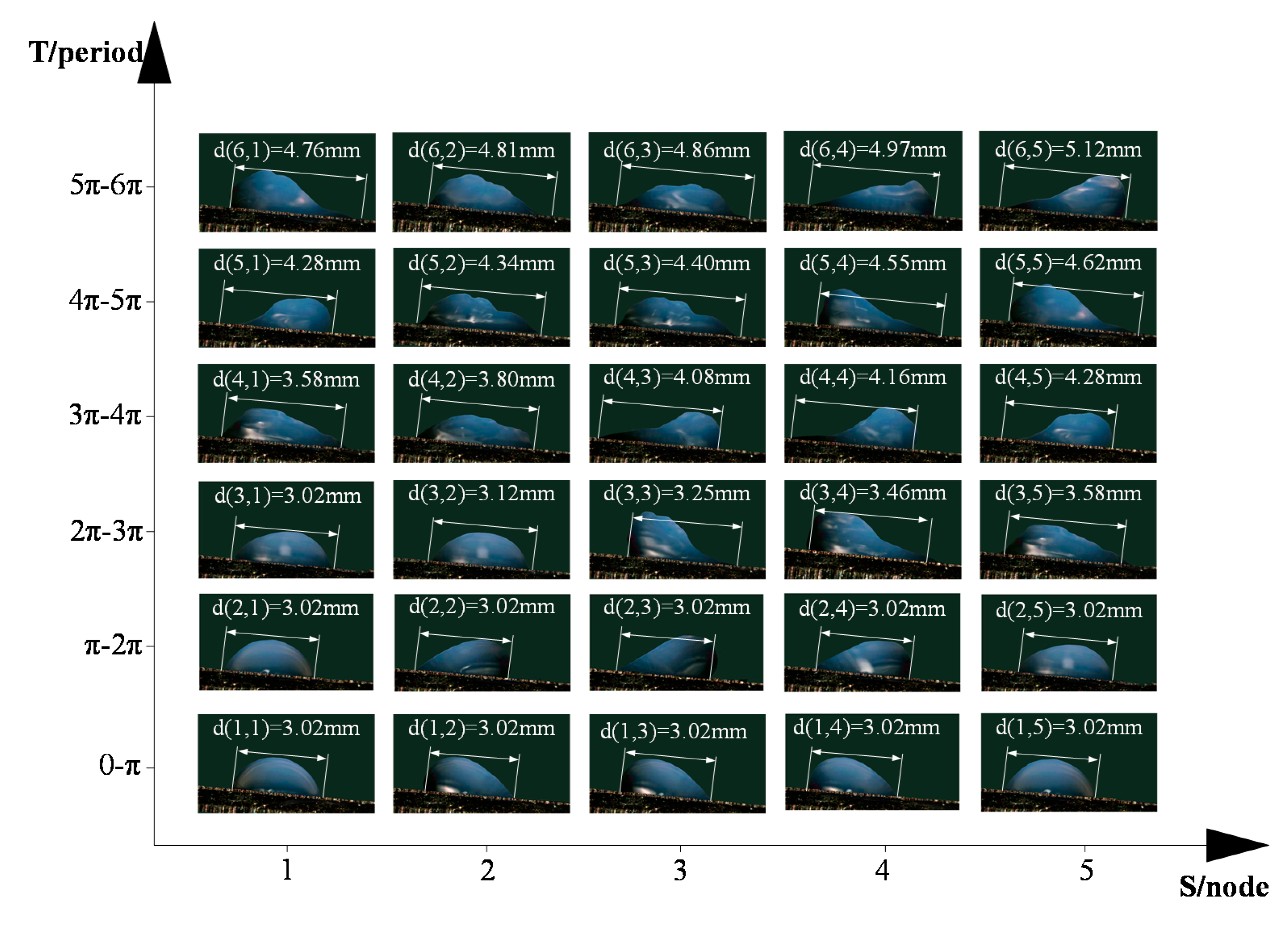
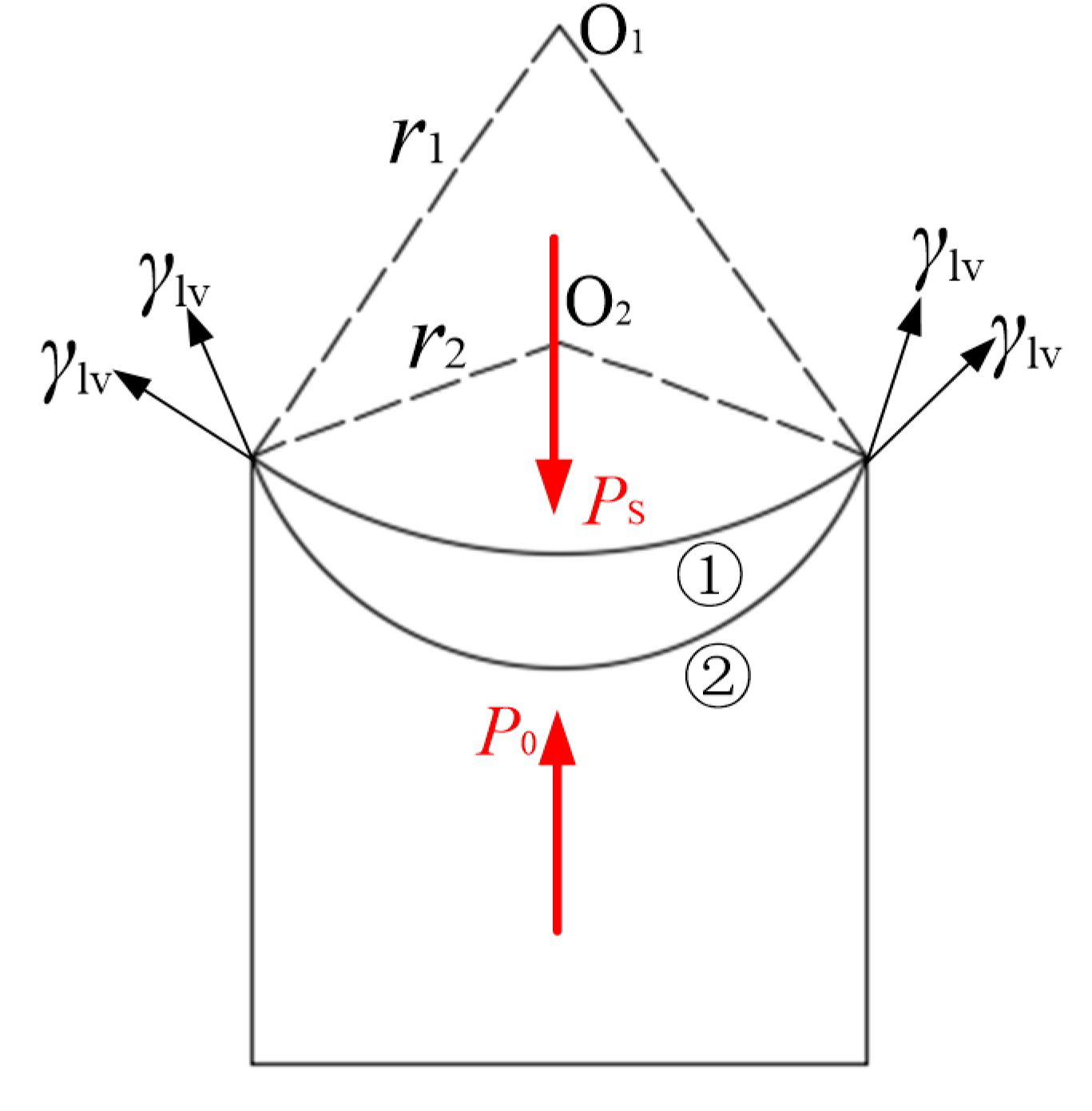
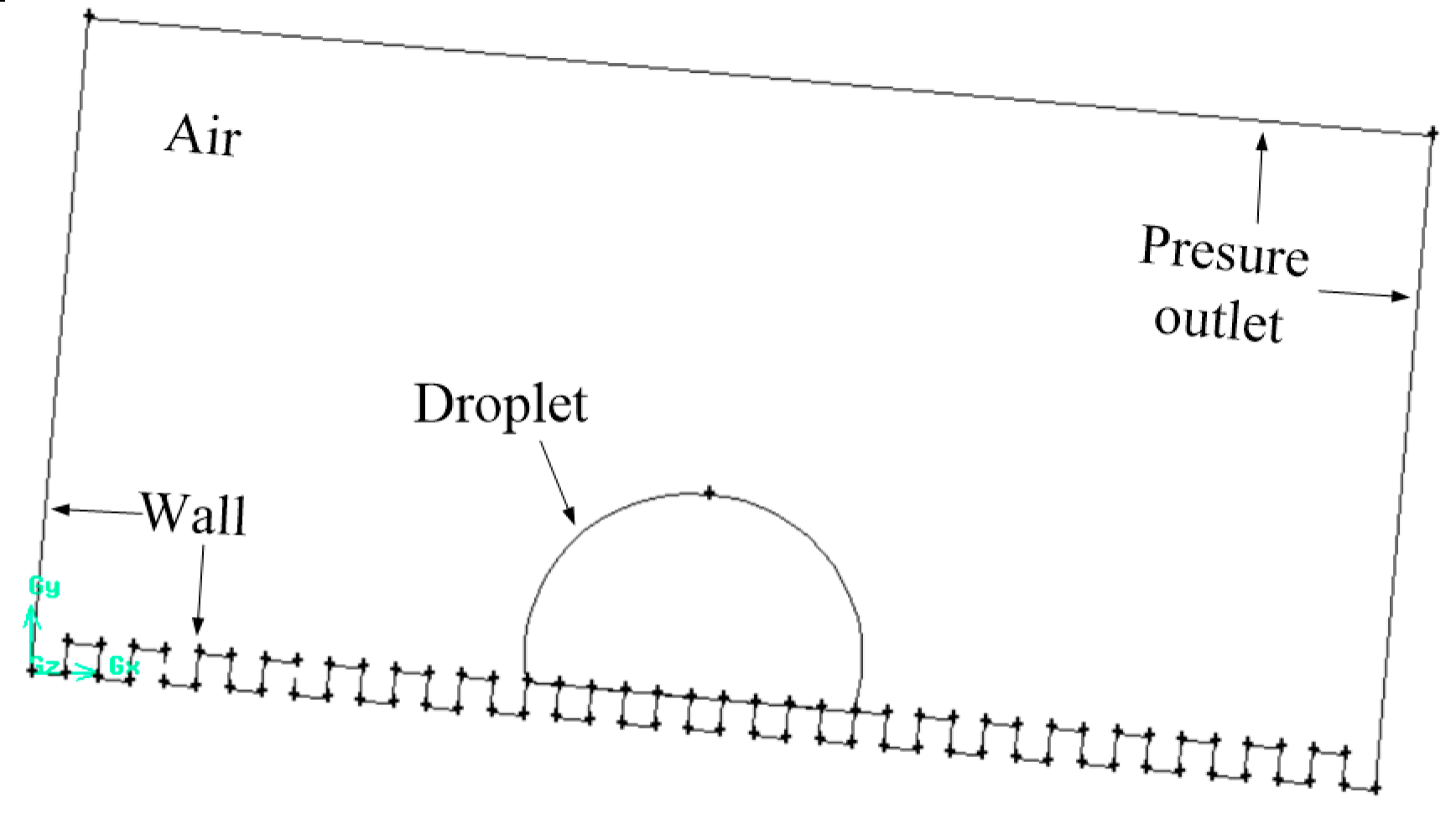


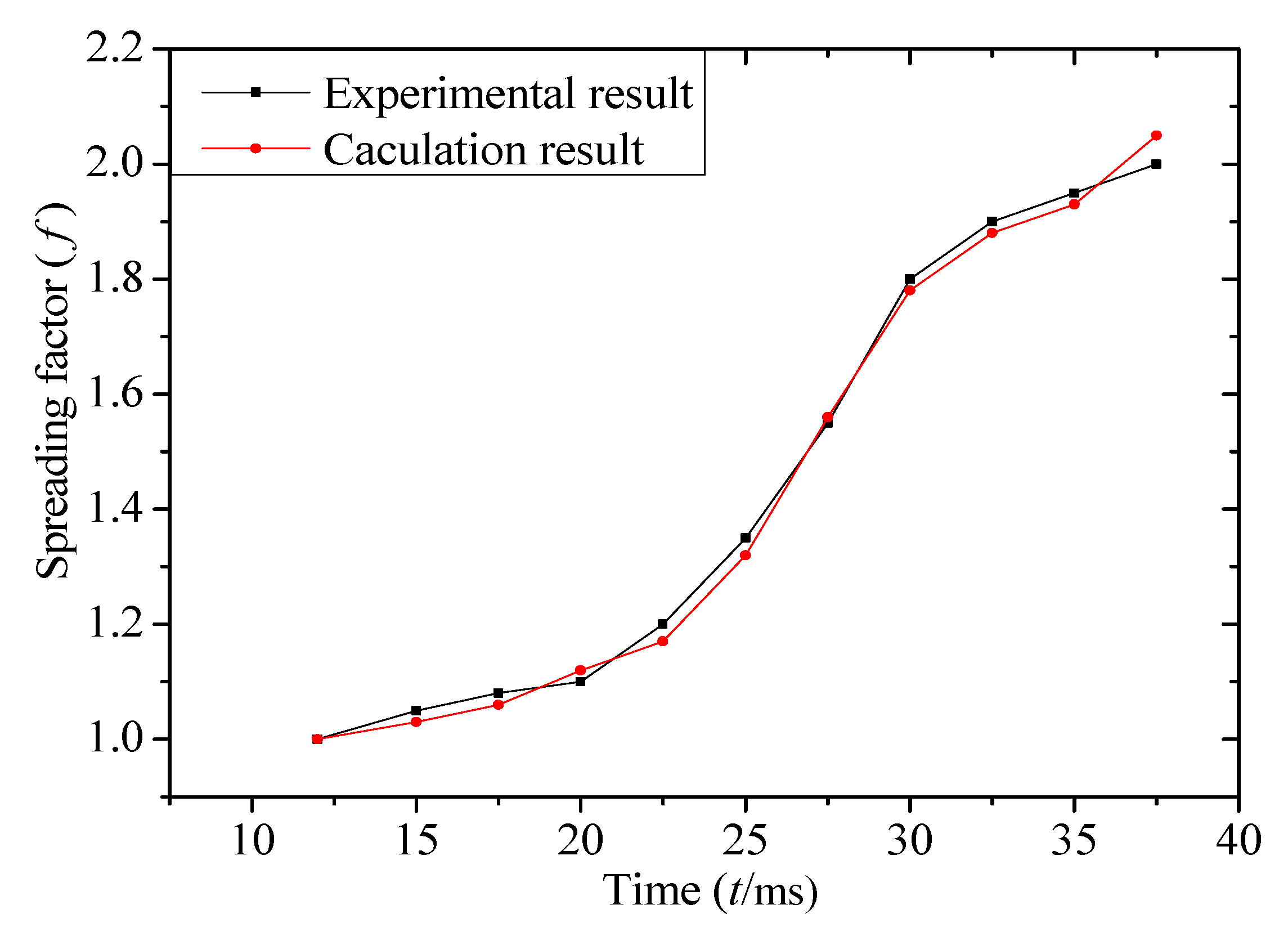

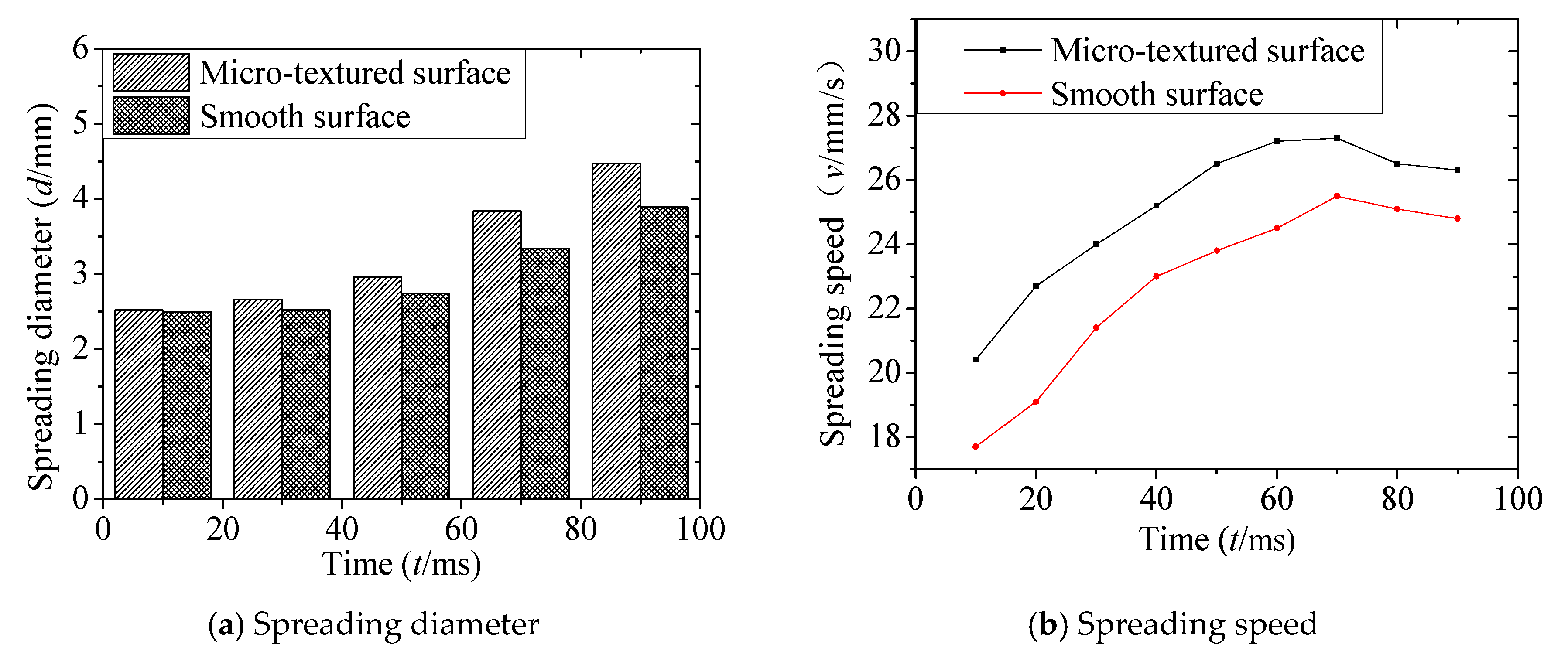
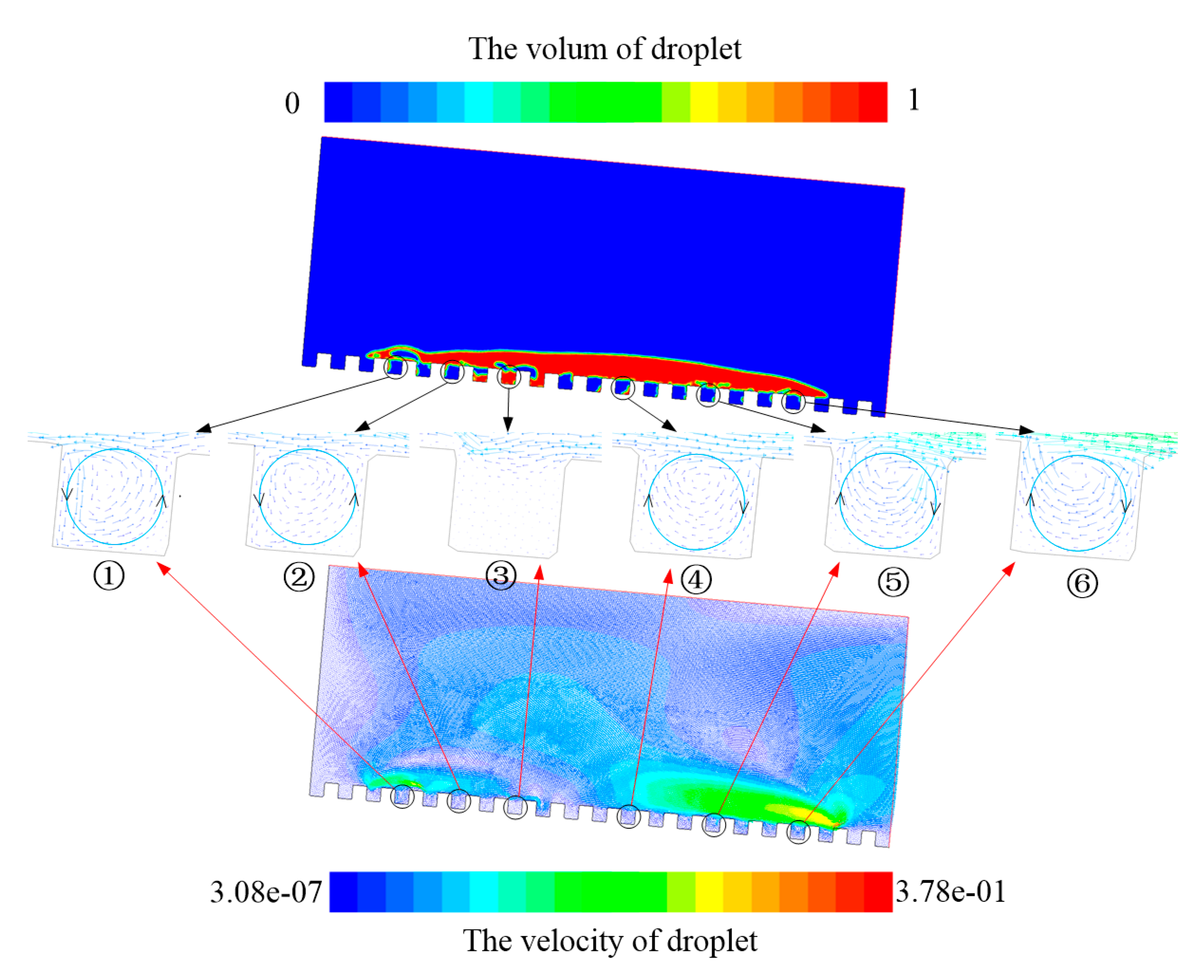

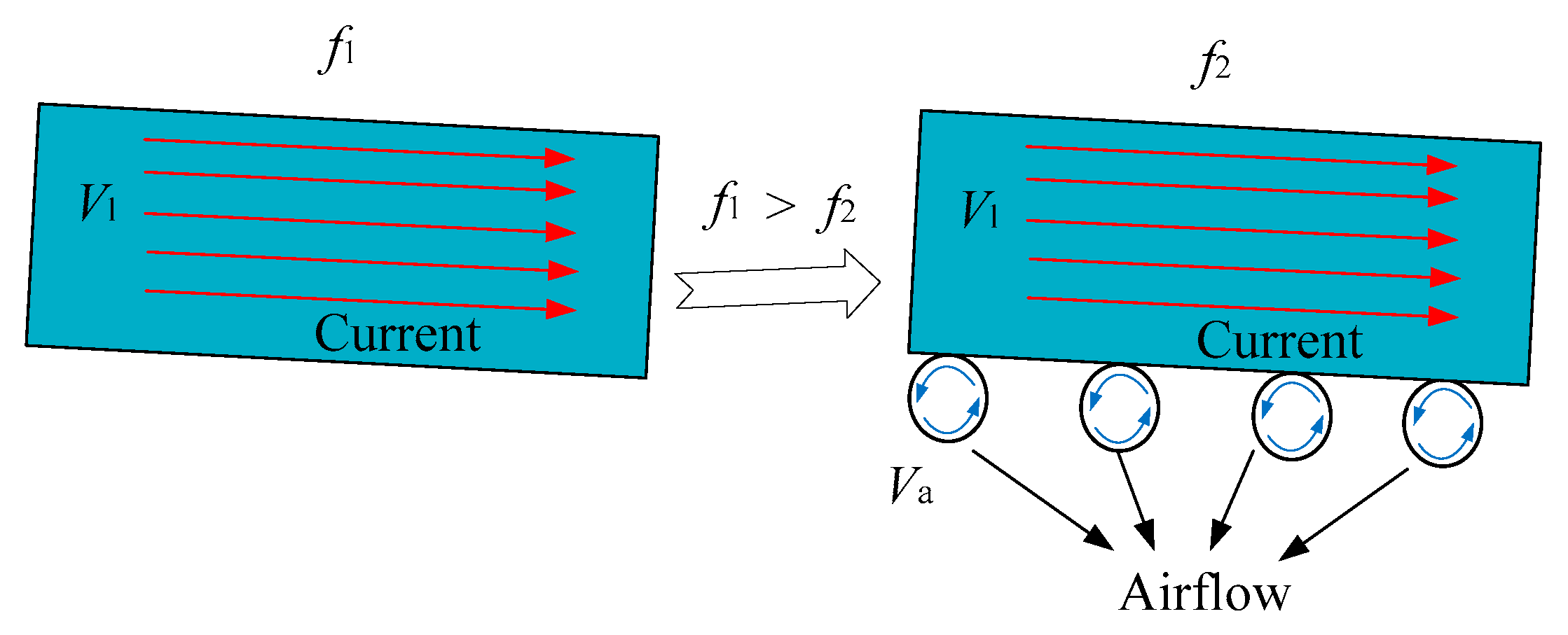
© 2020 by the authors. Licensee MDPI, Basel, Switzerland. This article is an open access article distributed under the terms and conditions of the Creative Commons Attribution (CC BY) license (http://creativecommons.org/licenses/by/4.0/).
Share and Cite
Xu, J.; Ma, J.; Ni, J.; Fan, S.; Zhang, L.; Wang, R. Morphological Evolution and Interfacial Effects Analysis of Drop Motion in Transverse Vibration of Inclined Plate. Coatings 2020, 10, 845. https://doi.org/10.3390/coatings10090845
Xu J, Ma J, Ni J, Fan S, Zhang L, Wang R. Morphological Evolution and Interfacial Effects Analysis of Drop Motion in Transverse Vibration of Inclined Plate. Coatings. 2020; 10(9):845. https://doi.org/10.3390/coatings10090845
Chicago/Turabian StyleXu, Jing, Jingxuan Ma, Jing Ni, Shaochao Fan, Linan Zhang, and Ruijin Wang. 2020. "Morphological Evolution and Interfacial Effects Analysis of Drop Motion in Transverse Vibration of Inclined Plate" Coatings 10, no. 9: 845. https://doi.org/10.3390/coatings10090845
APA StyleXu, J., Ma, J., Ni, J., Fan, S., Zhang, L., & Wang, R. (2020). Morphological Evolution and Interfacial Effects Analysis of Drop Motion in Transverse Vibration of Inclined Plate. Coatings, 10(9), 845. https://doi.org/10.3390/coatings10090845






